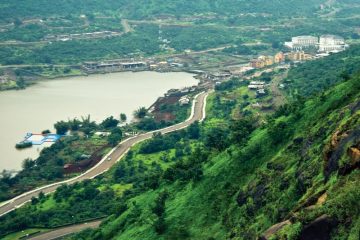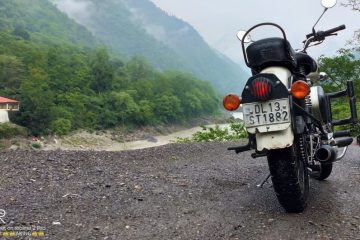Pashmina Trail: From Goat to Shawl in Leh – A Scenic Bike Journey
The jewel in the Indian Himalayas, Leh is a place where culture and natural beauty coexist. This high-altitude paradise, well-known for its breathtaking vistas, meditative monasteries, and unique customs, provides the ideal fusion of adventure and culture. The process used to produce Pashmina wool, which is renowned for its wonderful softness, is one such fascinating feature. Have you ever wondered how gorgeous Pashmina shawls make their way from the backs of Himalayan goats to your closet? Riding through beautiful landscapes, the “Pashmina Trail” bike trip through Leh offers you to experience this captivating journey.You may pedal through some of the most breathtaking landscapes in the area while bike rental in Leh You can also meet local artists, visit communities that produce pashmina, and see firsthand the way complex wraps are made. Let’s ride our bikes along this Pashmina route, from goat to shawl.
The Beginning: Meet the Changthangi Goats
The Changthangi goats, who are local to the Changthang plateau near Leh, are the starting point of the Pashmina shawl’s journey. Pashmina is unique because of the ultra-fine wool that these goats produce. The plateau, which is almost 14,000 feet high, is a frigid desert where temperatures dip sharply, and the goats use the wool as insulation.
You take a bike ride to the villages where these goats are raised to begin your biking adventure. You’ll see amazing landscapes along the route, including broad plains, rocky mountains, and barren hills. The clean mountain air and the constantly shifting sky provide a sensory treat while you ride. It’s now easier than ever to get to these remote regions because of Leh bike rental services.
You will see the Changpa nomads who have been residing in these settlements for decades once you reach them. They rely on these goats for their livelihood, and it’s enlightening to see how they live. You’ll learn how the Changthangi goats receive care, how the raw wool is obtained, and how this humble beginning is the first step in the construction of an exquisite shawl.
The Wool Harvesting: A Delicate Process
The Pashmina wool must first be gathered before it can be transported from the Changthang plateau to local craftspeople. When the goats naturally shed their undercoat in the spring, the wool is gathered. The fine fibers are collected by the nomads through a careful combing of the goats’ fur, after which they wash and clean them.
More communities where these fibers are processed will pass by as you bike farther along your route. Biking around the area provides a peaceful means to interact with nature, and the area’s simple way of life is comforting. The path passes through valleys filled with little monasteries and stupas, giving your journey a more spiritual feel.
Stop by one of the village homes for a break and talk to the people who live there; they are usually happy to tell their story. You will fully get the cultural significance of Pashmina through these chats. Wool represents the way of life in the Himalayas and is more than just a product.
The Spinning: From Raw Wool to Yarn
The next step is to spin the wool into yarn after it has been gathered and washed. Traditional spinning wheels are used in this manual procedure, which is typically carried out by indigenous women. Observing these talented craftspeople at work is absolutely captivating, since this age-old craft has been handed down through the years.
You’ll get the chance to pause and watch this art form in action as your bike journey passes through quaint settlements like Phyang and Choglamsar. It’s a peaceful sight to see the artists focus their attention on spinning the fine fibers into yarn while the wheels hum continuously. It serves as a reminder that each Pashmina shawl carries a tale of commitment, talent, and artistry.
You may experience Leh’s distinct culture by cycling between these settlements and taking in the sights and sounds. These paths are easy to follow with the help of Leh bike rental services, so you can enjoy the freedom to explore at your own speed.
Weaving: Crafting the Pashmina Shawl
Weaving starts as soon as the yarn is spun. Each shawl takes days or even weeks to weave using the yarn on old wooden looms. Flowing rivers, snow-capped peaks, and growing wildflowers are among the sceneries that inspire the artists as they create complex designs.
Visiting the local workshops where this weaving magic is produced is one of the highlights of your bike tour along the Pashmina Trail. Observe as expert weavers skillfully create the shawls, each with a distinct pattern and feel. It is in this area that you will genuinely recognize the amount of work that goes into making a single Pashmina shawl—the attention to detail is amazing.
A quiet bike ride may be had from the weaving villages on Leh’s outskirts. An air of calmness is created by the looms’ boring clatter and the breathtaking natural setting. A memorable trip awaits you as you bike past charming farms, traditional Ladakhi houses, and little streams.
The Final Product: A Work of Art
The finishing touches—dying, work of art, and washing the shawls to bring out their sheen and softness—are the last steps in the Pashmina journey. The shawls are kept sustainable and environmentally benign by the use of natural dyes that are frequently made from nearby plants and minerals.
You visit a nearby Pashmina bazaar to complete your tour after your bike ride. The finished products are shown here, gorgeous and soft shawls that represent the cultural legacy of the area and are works of art in their own right. With the knowledge that you have witnessed every stage of its production, you can even choose to purchase a few coverings.
Conclusion
The goal of the Pashmina Trail bike tour is to foster an appreciation for the rich cultural legacy of the area in addition to enjoying cycling through Leh’s stunning scenery. This tour provides an in-depth understanding of the work, talent, and tradition that go into every Pashmina shawl, with activities like meeting the Changthangi goats and witnessing artists weave magic into wool.
It’s convenient and exciting to explore the Pashmina Trail on two wheels thanks to firms that provide bike rental in Leh. Few other forms of transportation can compare to the freedom of riding through these isolated locations to fully appreciate Leh’s natural beauty and rich cultural past.
So grab a bike and ride the Pashmina Trail if you’re searching for an incredible experience where adventure meets tradition. A close connection to the Himalayan way of life is promised, in addition to amazing views.



0 Comments